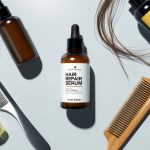Flawless Makeup Application: Proven Techniques for a Long-Lasting, Smooth Finish
Matching Foundation to Skin
Flawless foundation application starts with accurately matching foundation to both the skin tone and the subtle undertones beneath the surface. Taking the time to identify these details is essential for achieving a seamless, even skin tone that lasts throughout the day.
Identifying Undertone and Skin Tone
Determining both skin tone and undertone is the foundation for any successful makeup routine. Skin tone generally falls into one of several categories, such as fair, light, medium, tan, or deep.
Undertone, on the other hand, can be warm (yellow, peach, or gold), cool (pink, red, or blue), or neutral (a mix of warm and cool). A quick way to find your undertone is to look at the veins on your wrist: if they appear blue or purple, you likely have a cool undertone; greenish veins suggest a warm undertone; and if you can’t easily tell, you might have a neutral undertone.
Those with cool undertones often find that silver jewelry is more flattering, while warm undertones tend to suit gold jewelry. Choosing the correct undertone avoids that unnatural “mask” effect and helps the foundation blend smoothly.
Understanding this aspect makes it simpler to select both the right color category and the ideal foundation shade for your needs.
Selecting the Right Foundation Shade
Once undertone and skin tone are identified, testing foundation shades along the jawline provides the most accurate match. The correct shade should disappear into the skin without leaving a noticeable line.
It’s important to check the match in natural light, as indoor lighting can alter how a shade appears. People with oily skin may want to search for oil-free or matte foundation formulas to increase longevity and prevent shine.
Dry or combination skin types often prefer hydrating or dewy finishes. Many brands now offer virtual tools for finding your perfect foundation color match, which can be especially useful if shopping online.
Testing multiple shades and finishes before committing ensures a natural, even skin tone that endures throughout the day. Selecting the correct formula is just as important as the shade for maintaining a flawless look.
Foundation Application Methods
Choosing the right foundation application technique can impact the smoothness, coverage, and longevity of the finish. Factors such as skin type, desired finish, and foundation texture play a key role in achieving natural-looking, even results.
Using Makeup Sponges and Brushes
Makeup sponges and brushes offer different benefits when it comes to blending liquid foundation or cream foundation seamlessly into the skin. A damp makeup sponge helps press foundation into the skin, creating a dewy, airbrushed look.
This tool absorbs excess product, making it suitable for those seeking a lighter, buildable coverage. Brushes, particularly flat or buffing foundation brushes, work well for distributing foundation evenly and achieving medium to full coverage.
Using circular motions aids in smoothing the product and prevents patchiness. It’s critical to keep both sponges and brushes clean, as buildup can compromise blending and affect skin health.
Whether using a sponge or brush, stippling and patting motions tend to deliver a more flawless result than swiping or dragging across the skin, as advised by Clinique’s application tips.
Layering for Desired Coverage
Layering foundation allows for customizable coverage, from a natural skin-like finish to full coverage. Start by applying a thin layer of foundation with a sponge or brush, focusing on the center of the face and working outward.
Let each layer set before adding more to prevent cakiness and uneven texture. Build coverage slowly, targeting areas needing extra help—like redness or blemishes—by tapping on additional product rather than applying a thick layer all over.
Blending edges between layers is crucial for a seamless transition. Using a good primer and allowing it to dry beforehand ensures smooth layering and extends wear time, as recommended by The Beauty Blotter.
This approach provides control over coverage while maintaining a natural, comfortable finish that lasts.
Concealing Imperfections
Concealer is essential for achieving a smooth, flawless complexion and for addressing problem areas such as blemishes, redness, and dark circles. Choosing the right products and applying them correctly ensures makeup remains seamless and long-lasting.
Targeting Blemishes and Discoloration
A precise approach is needed when concealing blemishes, redness, and brown spots. Start with a lightweight, buildable concealer that matches the skin tone or is slightly lighter.
Pinpoint application with a small brush or clean finger prevents excess product from emphasizing texture. Blend edges gently into the surrounding skin, taking care not to remove too much coverage from the targeted area.
If the imperfection is very red, a green-tinted corrector can be applied sparingly underneath the concealer to neutralize the hue. For persistent marks, using a full-coverage foundation in conjunction with concealer increases longevity.
Set the area with a light dusting of translucent powder to prevent shifting and creasing throughout the day.
Brightening Under-Eyes
Dark under-eye circles are best addressed with a peach or orange-toned corrector, followed by a hydrating concealer one shade lighter than the skin tone. Dot the product onto the darker areas and blend softly with a damp makeup sponge to avoid cakiness and harsh lines.
The triangle technique—applying concealer in an inverted triangle under the eye—helps to lift and brighten the area. When blending, extend the concealer slightly outward to merge seamlessly with foundation and avoid a stark contrast.
Finish by setting the under-eyes with a finely milled setting powder or powder brush for a flawless, long-lasting appearance. Avoid heavy layers of product to minimize creasing and keep the under-eye area looking natural and refreshed.



